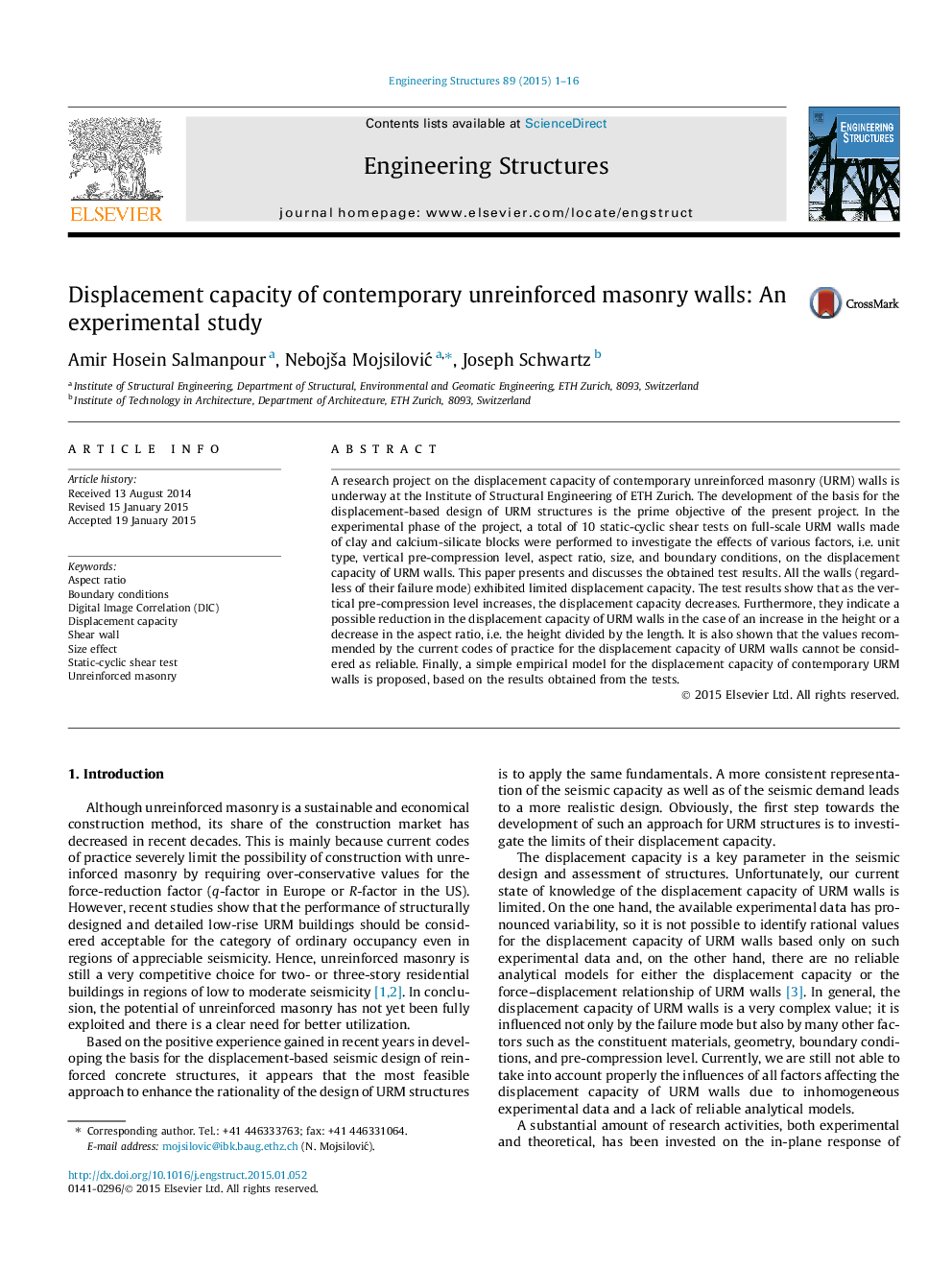| Article ID | Journal | Published Year | Pages | File Type |
|---|---|---|---|---|
| 6740388 | Engineering Structures | 2015 | 16 Pages |
Abstract
A research project on the displacement capacity of contemporary unreinforced masonry (URM) walls is underway at the Institute of Structural Engineering of ETH Zurich. The development of the basis for the displacement-based design of URM structures is the prime objective of the present project. In the experimental phase of the project, a total of 10 static-cyclic shear tests on full-scale URM walls made of clay and calcium-silicate blocks were performed to investigate the effects of various factors, i.e. unit type, vertical pre-compression level, aspect ratio, size, and boundary conditions, on the displacement capacity of URM walls. This paper presents and discusses the obtained test results. All the walls (regardless of their failure mode) exhibited limited displacement capacity. The test results show that as the vertical pre-compression level increases, the displacement capacity decreases. Furthermore, they indicate a possible reduction in the displacement capacity of URM walls in the case of an increase in the height or a decrease in the aspect ratio, i.e. the height divided by the length. It is also shown that the values recommended by the current codes of practice for the displacement capacity of URM walls cannot be considered as reliable. Finally, a simple empirical model for the displacement capacity of contemporary URM walls is proposed, based on the results obtained from the tests.
Keywords
Related Topics
Physical Sciences and Engineering
Earth and Planetary Sciences
Geotechnical Engineering and Engineering Geology
Authors
Amir Hosein Salmanpour, NebojÅ¡a MojsiloviÄ, Joseph Schwartz,
